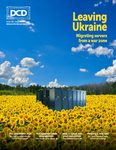Many years ago I watched a documentary about a party planner in Chelsea, the most fashionable and exclusive London borough. I saw her rearranging table settings in Michelin starred restaurants, micro-managing guest lists and hopping in and out of taxis between florists and some of the smartest addresses in town. She was unfailingly professional and immaculately dressed.
At the end, the filmmaker asked her what sort of things kept her awake at night: what were her biggest worries? “My worries are the same as everyone else’s” she replied earnestly. “Things like…is my dress crumpled?”
Living in your bubble
It is tempting to ridicule her but, in her world this is a legitimate concern. A crumpled dress could be career-ending: who wants a disheveled party planner? What troubles me is her assumption that this is universal, that for everyone the most pressing anxiety is not whether they can afford the mortgage or pay the electricity bill or feed their children, but whether their clothing is creased. Living with ten million others in one of the most cosmopolitan cities in the world, is she unaware of the realities of life for those outside her immediate social circle? Is she too preoccupied with her own world, or just wilfully ignorant?
The answer is that she is doing what everyone else does, as a single trip on a crowded London Underground train will prove. People pressed against each other develop a protective insulating bubble by pretending they are alone. Anyone who makes eye contact or tries to strike up a conversation is immediately identified as a foreigner, or insane.
What we have here are parallel universes coexisting in close proximity without intersecting in any obvious way. And this makes me think of data centers, where current controversies over new developments seem to represent another case of two seemingly unconnected worlds that now need to acknowledge each other. Having spent many years navigating the no-man’s land between a highly technical, fast growing and rather secretive industry, and media and policy makers in the outside world, it is clear to me that there is a communication problem.
Data centers are not new, they have been around for decades, quietly occupying obscure corners of trading estates and have, especially in the UK, largely passed unnoticed. While developers restricted themselves to brownfield, ex-industrial sites, sector growth attracted little attention. However, data center capacity is expanding rapidly to provide the infrastructure needed to underpin our unquenchable thirst for digital services, and facilities themselves are getting larger and becoming more physically obvious within communities. People are asking legitimate questions about land use and consumption of scarce resources like power and water. At the same time, data center developments often seem to be cloaked in secrecy and as a result, they inevitably attract comment and speculation.
Secrecy destroys trust
I had a friend who was a “Bawdsey Boffin”, involved in the development and testing of airborne radar in Suffolk on the East coast of the UK, just before the second world war. The activity was shrouded in mystery and the locals were highly suspicious: he was accused on multiple occasions of being part of a government conspiracy to manufacture “Death Rays”. There were good reasons for secrecy but it did not inspire confidence or trust within the community. Data center developers are habitually very coy about their plans and this can be unhelpful: it fuels uncertainty, and the current lack of transparency regarding resource use and associated impacts creates a perfect platform for mythologizing and mud-slinging.
From this point it takes a surprisingly short time for ideological battle lines to start being drawn up, irrespective of whether there is anything to fight over.
So what needs to be done to connect these two worlds? I think we need a social contract. Data center operators and developers need to recognize that they do have impacts on the communities within which they choose to locate their operations. These may not be the issues that are often associated with new developments; data centers don’t generate much traffic, they are unlikely to produce noxious chemicals, pollute water courses or present significant landscape issues. But they are electro intensive so need a dedicated power supply, some use large quantities of water for cooling, and they need standby generating plant that, although it rarely runs, is noisy and polluting when it does operate.
Moreover, because data centers have locational attributes, they also tend to develop in clusters. This clustering multiplies demands on utilities and land and has consequential impacts such as land price escalation and, potentially, narrowing the range of business functions and therefore employer types in a local area. And because data centers tend to need highly skilled staff, they may only have a marginal effect on local employment or may draw in highly paid individuals who then push up local property prices or annoy people with their swanky cars.
Dawning understanding
Over the last ten years I have spent a lot of time talking about data centers to people outside the sector – journalists, policymakers, friends, students. Their questions are instructive. “Does the internet run through the electricity grid?” “Why can’t data centers all be built in Iceland?” “Why does my smartphone need a data center?” “Why do we need data centers now we have the cloud?” And so on. These told me two things: firstly that people struggle to understand what data centers do and why we need them, and secondly that the sector needs to do a better job of explaining itself.
But getting people to understand that data centers are important is only part of the solution. Everybody knows perfectly well that electricity is critical but nobody wants to live under a pylon. So operators have to understand and address the concerns of local residents, of local government, of planning authorities, of utility providers and of course other industry groups who might have an interest, particularly farmers. Developers need to think carefully how they can best help host communities achieve their educational and employment ambitions: they need to think in terms of community dividends, not share dividends. And clustering could actually be a benefit if operators are prepared to work collectively.
But to do all this successfully requires resource and persistence, and recognition that social performance is not a fluffy add-on but a strategic way of managing business and reputational risk There are industries that have been doing this successfully for decades and while data centers may feel they have little in common with chemicals, energy or mining, it is here and not in digital infrastructure where best practice resides.
So what is this best practice? Simplistically, there are some golden rules: social performance must be strategic, and the community engagement and community development activities that are part of this strategy must be qualitative: relevant and necessary at a local level. They should be proactive rather than reactive, sustained and consistent, not short term or piecemeal. This may all seem obvious but the effort is not trivial and in most regions, and for most operators, it is no longer optional.
Two sides to the contract
However, there are two sides to any social contract. As citizens, we need to accept that if we want to live connected lives, then we need digital infrastructure which means data centers: they are the physical manifestation of the digital world. They are where the internet lives. As such they underpin almost everything we do and enable our economy to function, from supermarket logistics to vaccine development. But, despite the fact that we depend on the internet for every aspect of our daily lives; we often don’t make that connection: a recent demonstration opposing data center developments was organized and publicized entirely through internet-enabled social media, but the irony was entirely lost on the instigators. There is a sense that the internet somehow runs by magic. It does not, it is an essential utility and it runs on physics. Moreover, the extent to which we rely on it means that it must work - all the time - and this demands the kind of industrial-scale infrastructure that we would take for granted elsewhere.
So while our party planner, in her (hopefully) immaculate dress, might opt to maintain her insulated existence, data center operators are choosing to engage, and earn their social license to operate. Albeit belatedly, social performance is moving up corporate agendas, both strategic and operational. At a more general level we are seeing greater transparency and accountability: regulators are increasing their scrutiny of data center operations and the sector is setting ambitious targets through voluntary agreements. There is a lot more to be done but things are moving in the right direction. And as transparency improves on energy and resource use, there will be less room for conjecture, and we can all have a more grown-up conversation. I can’t wait.


